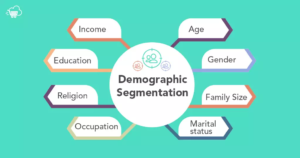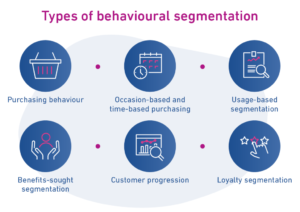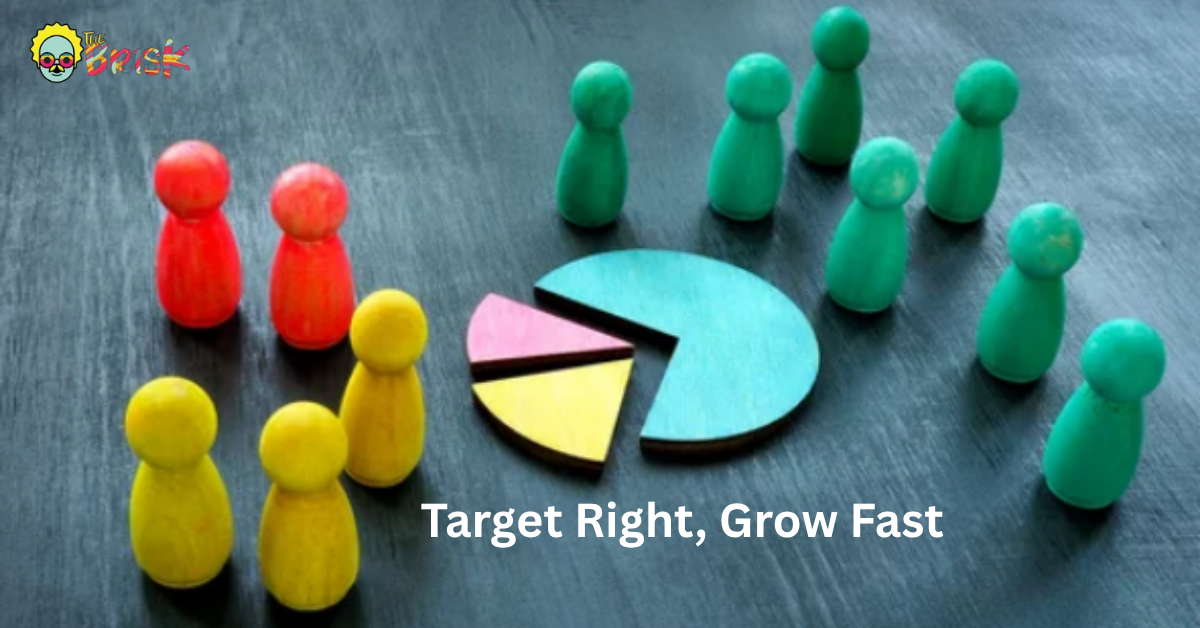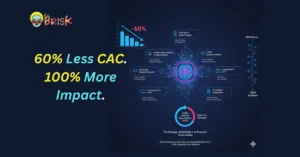The majority of the market is made up of consumers and sellers, and each client may have different expectations, attributes, behaviors, or spending habits.
Each customer is unique with their own special needs. As a result, sellers can divide a market into several distinct markets.
Each consumer group represents a market sector, and each segment represents a group of customers with similar requests or needs.
They divide the market into distinct groups with varying needs, preferences, and behaviors, as well as varying goods and services. Market segmentation is the act of splitting a market into parts.
What Exactly Is the Definition of Market Segmentation?
Market segmentation is the process of dividing a market into various groups based on shared factors such as gender, income, personal characteristics, lifestyle, preferences, needs, or location. Such divisions can help sell more products, marketing, branding, and sales.
Brands can use divisions to come up with strategies for various categories of customers, based on how they prioritize particular products and services. As a result, the brand may send a more dynamic message with the confidence that it will make a difference.
The Importance of Market Segmentation.
The importance of this method extends well beyond dividing the target market. Market segmentation helps marketers to organize initiatives more easily since it allows them to focus on specific client groups rather than the whole public.
Marketers may save time, cost, and other resources by segmenting their campaigns. Companies can learn more about their consumers via market segmentation.
They get a greater grasp of the interests and desires of customers, allowing them to target efforts to a client group most likely to buy an item.
Market segmentation may help you to uncover new methods to reach out to your present consumers, and also to find new markets of targeted buyers you haven’t touched before.
Analyzing your clients in detail will allow you to identify previously unidentified issues or difficulties that your company can address.
Market segmentation is a powerful tool for any marketing team. It shows your consumers that you get them by sending them a message that is targeted to certain aspects of their lives.
Understanding how to correctly communicate a message can help your business develop massively.
How to Segment Your Market?
When it comes to dividing your target market, there are four major options you can choose from. The four basic types of market segmentation that you should be familiar with are demographic, geographical, psychographic, and behavioral attributes.
If you want your company to succeed in the long run, you must first understand these four segments.
Each customer group you create will have unique needs and expectations, which you may effectively meet if you do your analysis.
As a result of adopting market segmentation, your company should be able to use its resources more efficiently and make more educated marketing decisions.
1. Geographic Segmentation
Geographic segmentation is the process of categorizing clients based on their location. The location of a consumer can aid in identifying their needs and providing them with location-specific marketing.
Customers’ needs and preferences change based on their geographic region, climate, and location, and knowing this allows you to select where to sell and advertise a brand, as well as expand your business.

If you need to deliver an advertisement to individuals in a particular region, such as if you’re advertising a relatively small organization, segmenting a market by geography is necessary.
It’s particularly important if you’re targeting a large area since it allows you to adjust your messaging to regional variances in language, hobbies, norms, and other characteristics, as well as people’s diverse demands.
2. Psychographic Segmentation
Psychographic segmentation takes into account the psychological components of consumer behavior by segmenting markets based on consumer lifestyles, personality types, beliefs, views, and interests.
When big businesses, such as the fitness industry, group their clients into groups of people who care about good health and exercise, they apply psychographic segmentation.

Survey questions, polls, interviews, crowd tests, and studies can all be used to get a better understanding of the market.
3. Demographic Segmentation
Demographic segmentation divides a market based on criteria such as age, gender, educational attainment, family structure, employment, race, and income.
These are the most popular methods for businesses to categorize their customers. Consumer preferences shift as people age. Many firms use age segmentation to sell their products.

You also won’t waste time and money targeting a market that isn’t interested in the items or services you offer. You might use demographic segmentation to target a certain client with your marketing by mixing various qualities or categories.
When this type of market segmentation is done, the idea is that all buyers within a demographic profile would have similar purchasing patterns.
4. Behavioural Segmentation
Behavioral segmentation divides your whole client base into categories based on previous interactions with your company.
Some of the key criteria of this segmentation type are brand awareness, purchasing patterns, past purchases, and product rating.
A great example of behavioral segmentation is brand loyalty. Brand loyalty is characterized as a behavioral attribute since it leads to a predictable purchase habit.

Marketers work hard to ensure that customers appreciate and stick with the brand over time.
Many businesses provide reward programs to lure clients with high levels of brand awareness in the hopes of gaining new, loyal customers.
Conclusion
Market research is an important component of not only product marketing but also of all organizational functions.
It enables us to have a better understanding of what drives people to buy items on the market and, as a result, how we can arrange our products to distinguish ourselves from other brands.
Market segmentation is a highly successful technique for companies because it helps them to know what consumers care about and understand their demands well enough to deliver a message that assures brand success.
Newer organizations like The Brisk let you create your own client segments and begin customizing services at volume based on deep analytics about your key consumer groups.




No Comments